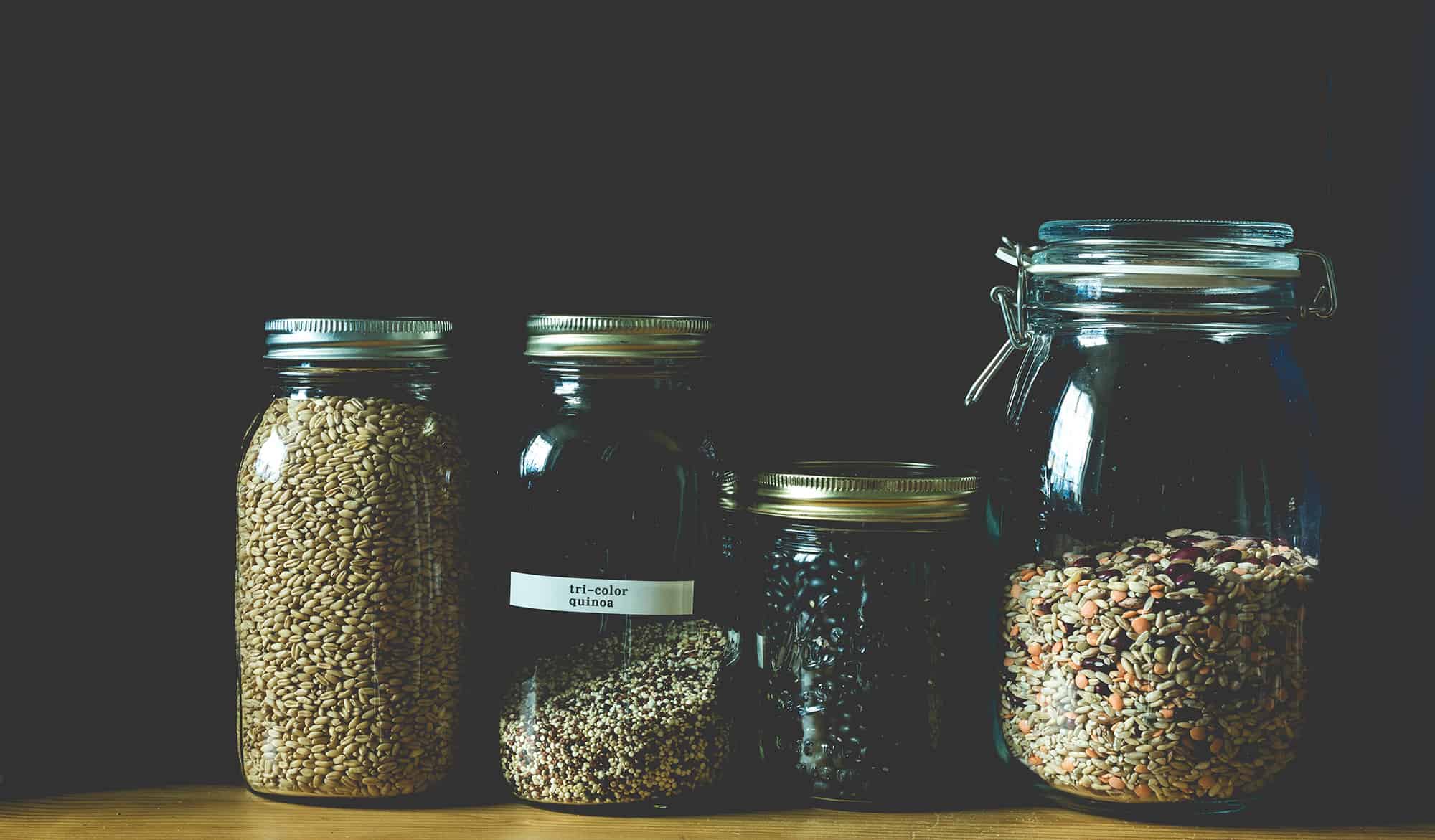Many fashionable diet theories advise people to avoid carbohydrates, naming them as a culprit in our obesity crisis. This advice is a huge and faulty generalization. By looking at the delicate, thin bodies of Japanese people, who consume high-carbohydrate diets composed of large amounts of rich and starchy vegetables, it’s impossible to conclude that all carbs lead to weight gain. Still, the subject of whether to eat grains does stir up emotions for many. Some people live on brown rice and oatmeal; others do better with less grains, and some swear by getting off grains altogether. No food is inherently “good” or “bad”, so I encourage you to experiment with whole grains and see which ones work best for you, if any.
Whole grains have been a central element of the human diet since we stopped hunting and gathering and settled into agrarian communities. Until very recently, people living in these communities on all continents had lean, strong bodies. In the Americas, corn was the staple grain, while rice predominated in India and Asia. In Africa, people had sorghum and millet. People in the Middle East enjoyed whole-wheat pita bread and couscous. In Europe, it was corn, millet, wheat, rice, pasts, and dark sourdough breads. In Scotland, it was oats. In Russia, they had buckwheat or kasha. For generations, very few people eating grain-based diets were overweight.
People are gaining weight today because they eat too much processed junk food containing refined carbohydrates. Remember refined carbohydrates, like sugar, are associated with weight gain, while complex carbohydrates are associated with healthier BMIs. People will eat all kinds of junk food, yet they avoid natural, whole grains, which might significantly benefit their health. Whole grains are some of the best sources of nutritional support, containing high levels of dietary fiber and B vitamins. Because the body absorbs them slowly (due to the fiber), grains provide long-lasting energy and help promote satiety. Whole grains can especially help people who struggle with maintaining a steady level of blood sugar. Whole grains release sugar into the bloodstream slowly, in contrast to the sudden rush and energy crash caused by refined sugary foods and sodas.
Sally Fallon Morell points out that people traditionally soaked or fermented their grains, often for a few days before cooking. Soaking grains, or fermenting them by soaking in hot water with vinegar, reduces the phytic acid and makes the grains easier to digest. All grains contain phytic acid in the outer layer of the bran. Phytic acid combines with certain minerals in the body, such as calcium, magnesium, copper, and iron, and can block absorption in the intestines, which may lead to digestive disorders, mineral deficiencies, and bone loss. Eight hours of soaking in warm water will significantly reduce the phytic acid and greatly improve the nutritional benefits of grains. Even an hour of soaking will help. If you have difficulty digesting grains, you may want to try soaking them overnight.
The most common grain in our culture is wheat. Some people may be sensitive to wheat and not know it. Wheat products are heavily subsidized, and the food industry incorporates it into almost all breakfast cereals, cookies, cakes, and crackers. Gluten, a protein found in wheat, barley, and rye, is difficult for some to digest. If you are sensitive to gluten, you can experience bloating, constipation, diarrhea, or gas after eating wheat and other glutinous grains. Other related problems are brain fog, chronic indigestion, and candida. In more severe cases, someone might have celiac disease, which causes an autoimmune reaction to gluten that damages absorption sites in the small intestine. If you are allergic, you may experience hives or have difficulty breathing, and need to remove all gluten from your diet. Sometimes the symptoms occur immediately after eating, but they can also take time to manifest. If you think you have a gluten sensitivity, experiment with removing or reducing wheat and gluten products from your diet for a coup;le of weeks, and see how you feel. During that time, stick with gluten-free grains, such as amaranth, brown rice, buckwheat, millet, quinoa, sorghum, and teff.
Creating Great Grains
Measure the grain. Rinse. Remove any unwanted material.
Optional: Soak for 1 to 8 hours, to eliminate phytic acid and make the grain more digestible. Drain the grain, and discard the soaking water.
Add grain to recommended amount of water, and bring to a boil.
A pinch of sea salt or piece of kombu may be added to all grains except amaranth, kamut, and spelt (it interferes with cooking time for these).
Reduce heat, cover, and simmer for the recommended time.
Check your grains halfway through and near the end of cooking to determine whether they are done or if more liquid is needed. If too much liquid has been added, remove the lid, and boil off excess. You can change the texture of grains like quinoa, millet, or buckwheat with different cooking methods. Bringing the liquid to a boil before adding the grain will keep grains separate, like rice. Boiling the grains and liquid together will create a softer, porridge-like consistency.
Tip: To reheat cooked grains, simply add a bit more liquid, and reheat on low on the stove.
Happy Cooking!
Reprinted with kind permission of Integrative Nutrition LLC. Integrative Nutrition: A Whole-Life Approach to Health and Happiness (2018), p. 196-198.









































